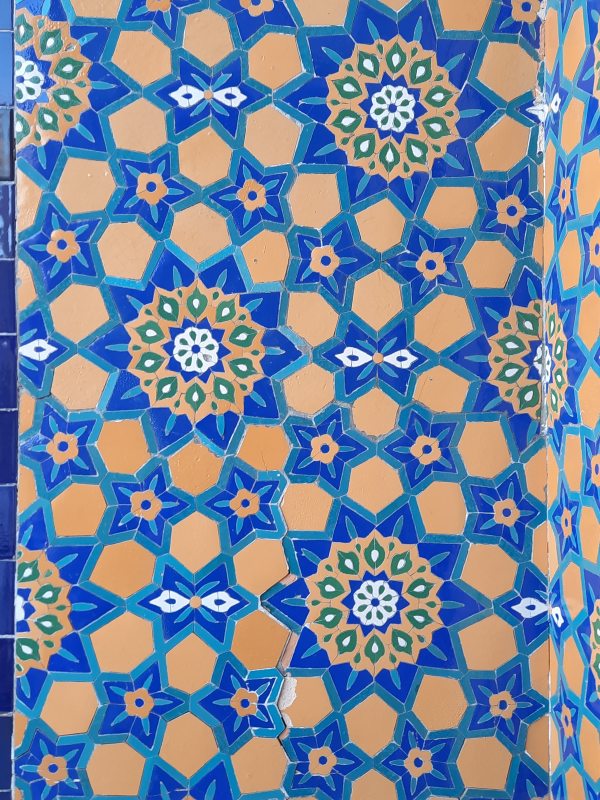Cut mosaic tiles
At the end of the 14th century a new technique in introduced: decoration in cut mosaic tiles, an expensive and labor-intensive innovation that was reserved for only the finest monuments. Previously, larger painted tiles were the norm, which were far simpler to produce. The origin of this innovation is not clear, but possibly it can be linked with to the arrival in the area of Iranian craftsmen resettled by force (via Timur's conquests).
An excellect example of mosaic faience is the Shirin Bika mausoleum at the Shah-i-zinda necropolis in Samarkand (1385-86), completely decorated by cut mosaic tiles. This technique allowed sharper detail compaired to painted and glazed tiles.

This technique is also used in panels of the Gur Emir complex in Samarkand.
In the picture below you can clearly see that the decoration is made by assembling small mosaic pieces colour by colour.
